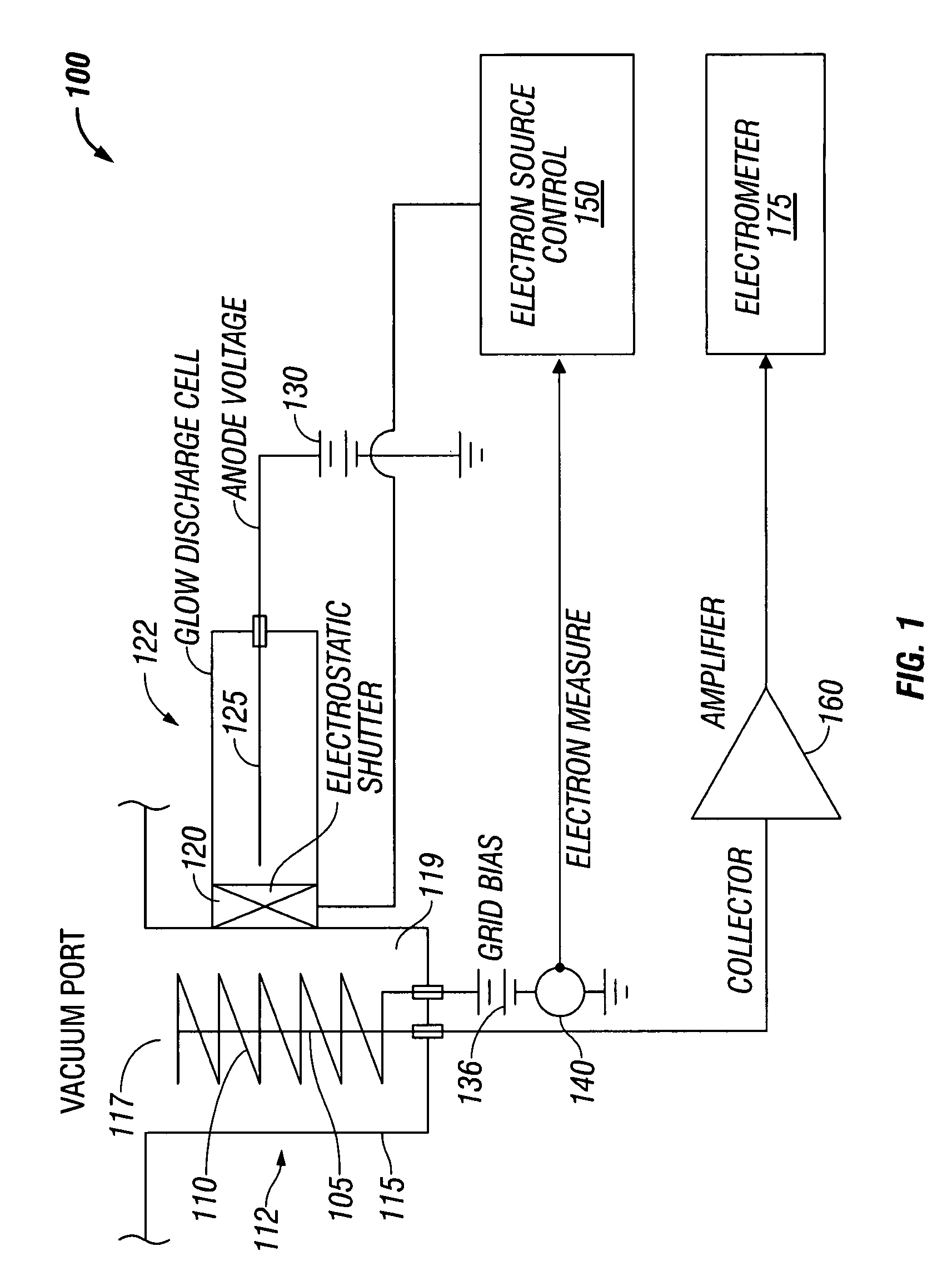Ionization gauge with a cold electron source
a technology of ionization gauge and electron source, which is applied in the direction of instruments, heat measurement, fluid pressure measurement, etc., can solve the problems of reducing the operational life of the gauge, affecting the operation of the gauge, and failing to meet the emission characteristics of the gauge's electron sour
- Summary
- Abstract
- Description
- Claims
- Application Information
AI Technical Summary
Benefits of technology
Problems solved by technology
Method used
Image
Examples
Embodiment Construction
[0016]A description of preferred embodiments of the invention follows.
[0017]As shown in FIG. 1, an ionization gauge 100 according to an embodiment includes a typical B-A ionization gauge 112 without a hot cathode but with a cold electron source 122. The B-A ionization gauge 112 may be a nude or non-nude type ionization gauge. The cold electron source 122 may be a cold cathode ionization gauge such as a glow discharge cell, of which one version is the inverted magnetron. The glow discharge cell generates an electron cloud using crossed electrostatic and magnetic fields. Other cold cathode ionization gauges that may be used as the cold electron source 122 include the Penning gauge, magnetron and the double inverted magnetron.
[0018]Generally, the inverted magnetron type gauge has two electrodes with an electric field between them caused by an anode being positive with respect to a cathode. Likewise, the cathode is negative with respect to the anode. The inverted magnetron type gauge is...
PUM
| Property | Measurement | Unit |
|---|---|---|
| temperature | aaaaa | aaaaa |
| volume | aaaaa | aaaaa |
| ionization volume | aaaaa | aaaaa |
Abstract
Description
Claims
Application Information
 Login to View More
Login to View More - R&D Engineer
- R&D Manager
- IP Professional
- Industry Leading Data Capabilities
- Powerful AI technology
- Patent DNA Extraction
Browse by: Latest US Patents, China's latest patents, Technical Efficacy Thesaurus, Application Domain, Technology Topic, Popular Technical Reports.
© 2024 PatSnap. All rights reserved.Legal|Privacy policy|Modern Slavery Act Transparency Statement|Sitemap|About US| Contact US: help@patsnap.com










